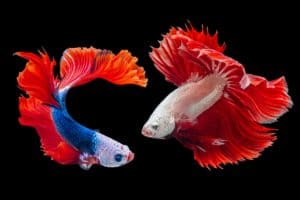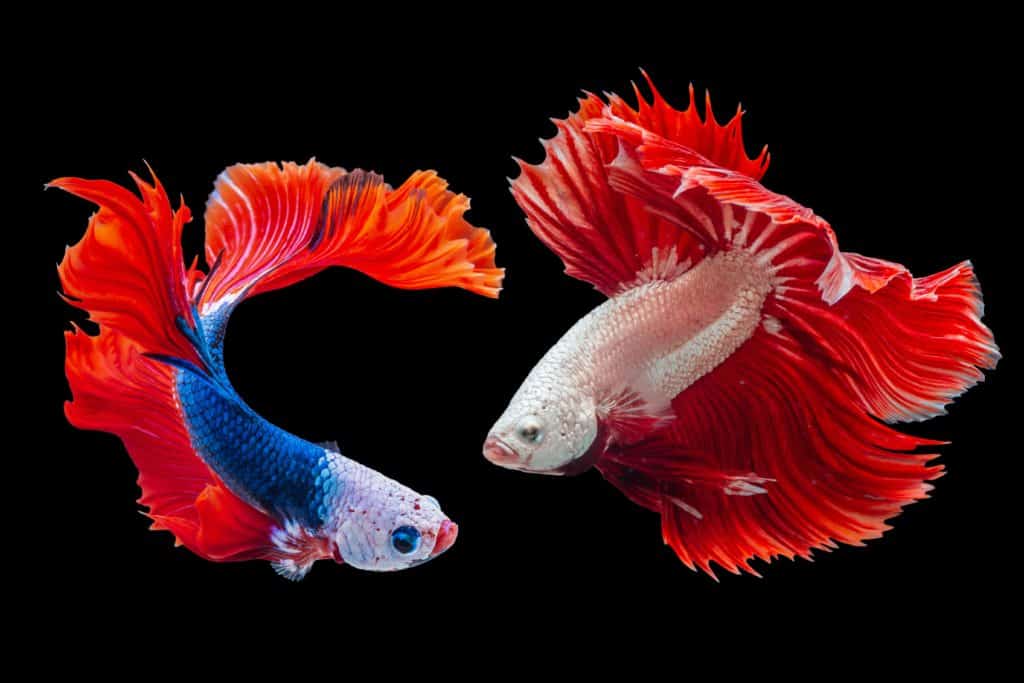**Post contains affiliate links. We take a *very* small commission from our recommendations.**
It can be very challenging to determine if your fish is the correct body size. Is my betta too skinny? Do I have a fat betta? Since fish food does not have ANY calorie listings on the packaging or are you actually weighing your fish, it can be hard to decide how much to feed. Overfeeding your betta, along with improper husbandry, leads to a risk of over feeding. The best way to determine if your betta is in the correct body condition is to assess their shape looking straight down from the top of their tank. (If your fish is in a bowl, read this.)
Your betta should look like a streamlined torpedo from above. Their “shoulders,” located right behind their operculum or gill flaps, should be the same width as the middle 1/3 of their body. If your fish has prominent shoulders, leading to a small middle, your fish is too skinny. If your betta’s sides bulge outside the “shoulders,” your betta is too fat.

What should I feed my betta?
There are many different foods on the market targeting bettas. However, they have a broad range of ingredients and formulations. Remember, bettas are LAZY fish, but they have to pull an ornate tail through the water. Research has shown that 35% dietary protein is a good range for betta fish. (And yes, they can eat veggies.) Fat levels have not been determined, but like many other fish, try to stick to around 5%. This is our best recommendation from all the commercially marketed betta foods.
Now, even if you have the right food, how many pellets to feed can be another challenge. Being tropical fish, your betta should be fed at least twice a day, at least 8 hours between feedings. Since pellet size varies widely, we recommend starting with the number of pellets that could, theoretically, fit within your fish’s eye ball. This should give you a good starting point that you can slowly build upon.
How to Fix Your Fat Betta
Sorry, but your fish will need a diet. Nothing too severe, however!
Start with examining the nutrition label on your fish’s food. If you have a significantly higher protein or fat, consider switching to another product. Some fat bettas are simply getting the fish equivalent of cheeseburgers!
If your protein and fat are within range, you next need to cut down on the amount of pellets fed per feeding. Start with decreasing each feeding time by one pellet, continue for 2 weeks and see if your fish’s body condition has improved. If no changes are seen, try another pellet subtraction.
Does your fat betta get lots of treats?
Fish treats include frozen, freeze-dried and carbohydrate-rich fruits. They are okay on a once a week basis. If they are the prominent feature or fed at least every other day, you need to cut back. If your betta absolutely needs to have something in their mouth, try shelled green peas. Yes, bettas can eat these no problem.
How to Fix Your Skinny Betta
On the opposite end of the fat betta spectrum is the super slender betta. If your betta is not keen on eating, you may need to try some other foods to supplement their diet. We recommend frozen mysis or brine shrimp at least once a day until they have put on some mass. These treats are super tasty and higher in fat and protein.
Skinny bettas will often present with increased periods of lethargy and fin erosion. If your betta is showing these signs, contact your local aquatic veterinarian for additional support.

